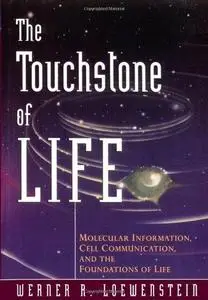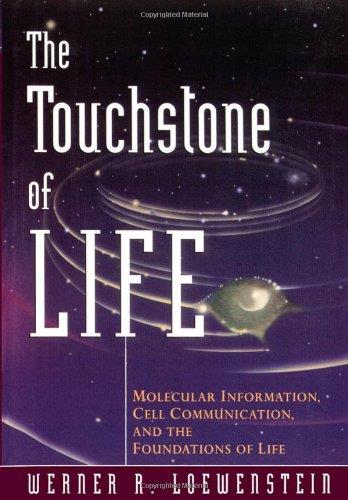The Touchstone of Life: Molecular Information, Cell Communication, and the Foundations of Life By Werner R. Loewenstein
1999 | 385 Pages | ISBN: 0195118286 | PDF | 23 MB
1999 | 385 Pages | ISBN: 0195118286 | PDF | 23 MB
Trying to find good books to review on cell biology just isn't easy, but I've been looking. Werner Loewenstein had an interestingly titled one published in 1999, that I thought sounded interesting: The Touchstone of Life: Molecular Information, Cell Communication, and the Foundations of Life. An intriguing combination of topics, I thought - especially the issues of cellular biochemistry and their origins. Molecular "information" was dubious however. I gave Loewenstein the benefit of the doubt - maybe he could do better than the inept attempts to use concepts from information theory to explain biological phenomenon I had seen previously (e.g. Dembski's No Free Lunch). Could he explain how one could quantify the information content of an organic molecule better than the prevailing paradigm of organic chemistry, and in particular, the kinetics and thermodynamics of biochemical interactions and their effects? Sadly, no. Don't get me wrong, he portrays cell biology and evolutionary history accurately enough, but the concept of molecular information doesn't contribute anything. In fact, on page 9 and surrounding pages, he explicitly defines molecular information as a dimensionless inverse of entropy. And by taking away the scaling factor of entropy he sets the stage for a book-full of hand-waiving and sub-par qualitative explanations, when quantification would be much more precise. For instance, on page 31, having gotten to the topic of "The Advantages of Molecular Complementarity," Loewenstein says: "When we speak about the transmission of information from one molecule to another, we mean a transfer of information inherent in the molecular configuration - in the linear sequence of the unit structure or in the three-dimensional disposition of the atoms. Since molecules cannot talk or engage in other human forms of communication, their method of transmitting information is straightforward: the emitter molecule makes the atoms of the receiver deploy themselves in an analogue spatial pattern." Anthropomorphize much? At best, this is an overuse of symbolism; at worst, it could fuel the naive interpretation that biomolecules possess some sort of intent or agency with which to decide to communicate (one step away from the invocation of deus ex machina or an intelligent capacity of molecules). Loewenstein is also focused upon the thought experiment known as Maxwell's demon. While much has been said about that as a thought experiment, it has little grounding in the world of experimental biology. For instance, he compares Maxwell's demon to ion channels, cell surface receptors, and enzymes, yet has to resort to classical thermodynamics and kinetics in biochemistry to describe the functions of such proteins. There's no `choice' in such reactions, only chemical transition states and affinities, energy flow (often by ATP hydrolysis), and cascades of such reactions. So yes, I'm rather disappointed with this book.



